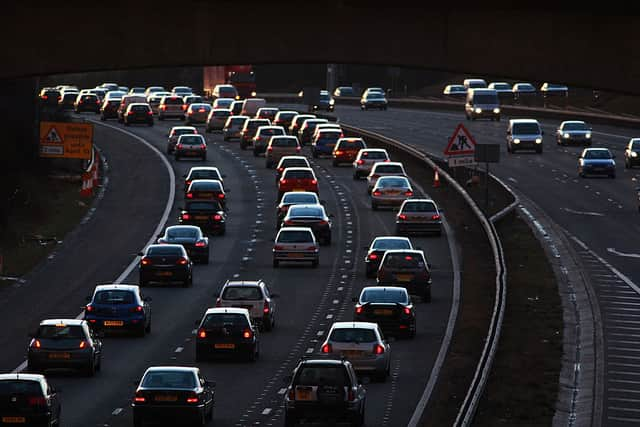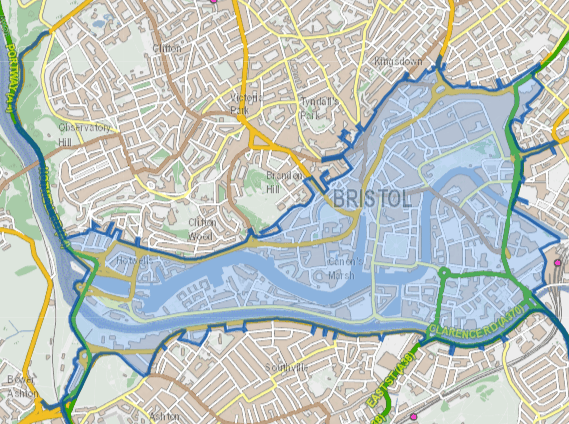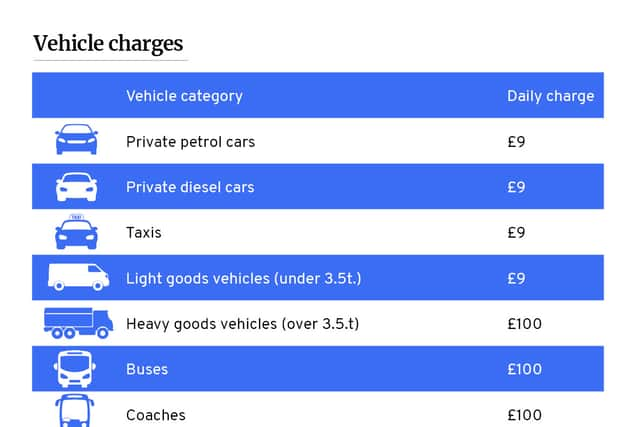Bristol Clean Air Zone launch 2022: What is the CAZ, when does it come into force and how will it affect me?
and live on Freeview channel 276
After months of delays, Bristol’s Clean Air Zone will finally go live today (November 28) . The city is following in the footsteps of Bath, Bradford and Portsmouth as Bristol works towards a target of reaching legal NO2 levels by the end of 2023.
Some Bristolians are in staunch support of the CAZ, while others have been opposed from the start - but either way, the scheme will be going ahead. Here’s everything you need to know about the city’s Clean Air Zone before its launch.
What is the Bristol Clean Air Zone?
Advertisement
Hide AdAdvertisement
Hide AdA Clean Air Zone (CAZ) is a specific location, usually a city centre, that aims to reduce public exposure to nitrogen dioxide (NO2) through restrictions on polluting vehicles, encouraging the use of cleaner vehicles and encouraging people to walk, cycle or use public transport. CAZ schemes are already active in four cities across the UK - Bath, Birmingham, Bradford and Portsmouth.


It was announced in 2020 that Bristol would get a Clean Air Zone of its own, with parts of Greater Manchester, Sheffield and Tyneside also destined to run CAZ schemes in the future. Since then, the project has faced a stream of delays, which Bristol City Council have blamed on the challenges of implementing a national Government scheme on a local scale.
Despite the hold up, Bristol City Council still hope to achieve NO2 levels within the legal limit in 2023. The scheme has received a mixed response, with groups such as the Bristol Clean Air Alliance saying it should have happened much sooner, and some residents and businesses insisting the CAZ will have a detrimental impact on their lives.
There are four types of Clean Air Zones, from Class A to Class D. Bristol’s Clean Air Zone will be in the ‘Class D’ category, which means all the following non-compliant vehicles will be charged to drive through it:
- Buses
- Coaches
- Taxis
- Cars
- Private hire vehicles
- Heavy goods vehicles (HGVs)
- Minibuses
- Motorbikes
Where is the Bristol Clean Air Zone?
Advertisement
Hide AdAdvertisement
Hide AdAs the map shows, the Clean Air Zone spans from the Clifton Suspension Bridge to Temple Quay. The Portway, a major route in and out of the city, is included in the CAZ, along with the Cumberland Basin. For a more detailed map, visit the Bristol City Council website.


When does the Bristol Clean Air Zone start?
The Bristol Clean Air Zone will go live on Monday, November 28 2022. The zones will operate 24 hours a day, 7 days a week, every day of the year.
The charge period runs from midnight to midnight. You must pay the charge by 11:59pm on the sixth day after driving into the CAZ. You can pay up to six days before you travel. If you do not pay the charge in this time, you may get a penalty charge notice (PCN).
Will I be charged for driving through the Bristol Clean Air Zone?
Over 71% of vehicles travelling into Bristol already meet the zone’s emission standards. Only older and more polluting vehicles will be charged. To avoid being charged in the Clean Air Zone, whether that be in Bristol or any other city that operates the scheme, your vehicle must meet the following minimum standard:
- Buses, coaches and HGVs: Euro VI
- Cars, vans, minibuses, taxis, private hire vehicles: Euro 6 (diesel) and Euro 4 (petrol)
- Motorcycles: Euro 3
Advertisement
Hide AdAdvertisement
Hide AdIn 2021, Bristol City Council announced a £43m package of support in the form of grants and loans to help businesses and residents buy or trade in vehicles for compliant upgrades.
How much will I be charged for driving through the Bristol Clean Air Zone?
- Private petrol car: £9 per day
- Private diesel cars: £9 per day
- Taxis: £9 per day
- Light Goods Vehicles (LGVs - under 3.5 tonnes): £9 per day
- Heavy Goods Vehicles (HGVs - over 3.5 tonnes): £100
- Buses: £100
- Coaches: £100


You can check if you’ll need to pay a charge for a vehicle before you drive in the Bristol Clean Air Zone using an online tool on the Government website.
Who is exempt from the Bristol Clean Air Zone?
If your vehicle does not meet CAZ emissions standards you may be able to apply for an exemption from the Clean Air Zone charges. The different types of exemption in Bristol are:
- National Clean Air Zone Exemptions
- Blue Badge Daily Exemptions
- Blue Badge Holder Longer Term Exemption
- Resident Exemption
- Hospital Patient Exemption
- Hospital Visitor Exemption
- Low Income Worker Exemption
- Specialist Vehicle Exemption
- Registered Community Transport Vehicle Exemption
- Commercial Vehicle with finance agreement exemption
- Home to school transport (PSV) exemption
- Home to school transport (personal travel budget) exemption
- Financial assistance scheme exemption
To apply for an exemption, visit the Bristol City Council website.
Comment Guidelines
National World encourages reader discussion on our stories. User feedback, insights and back-and-forth exchanges add a rich layer of context to reporting. Please review our Community Guidelines before commenting.
